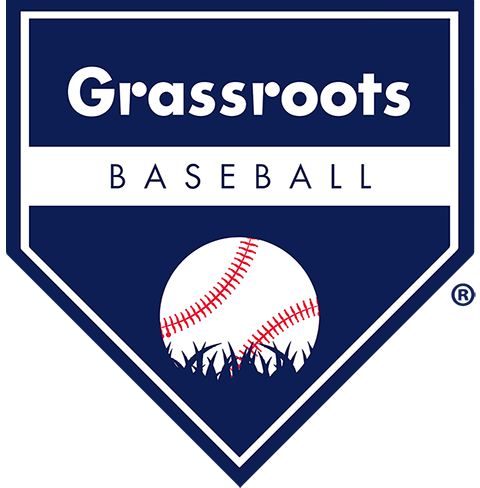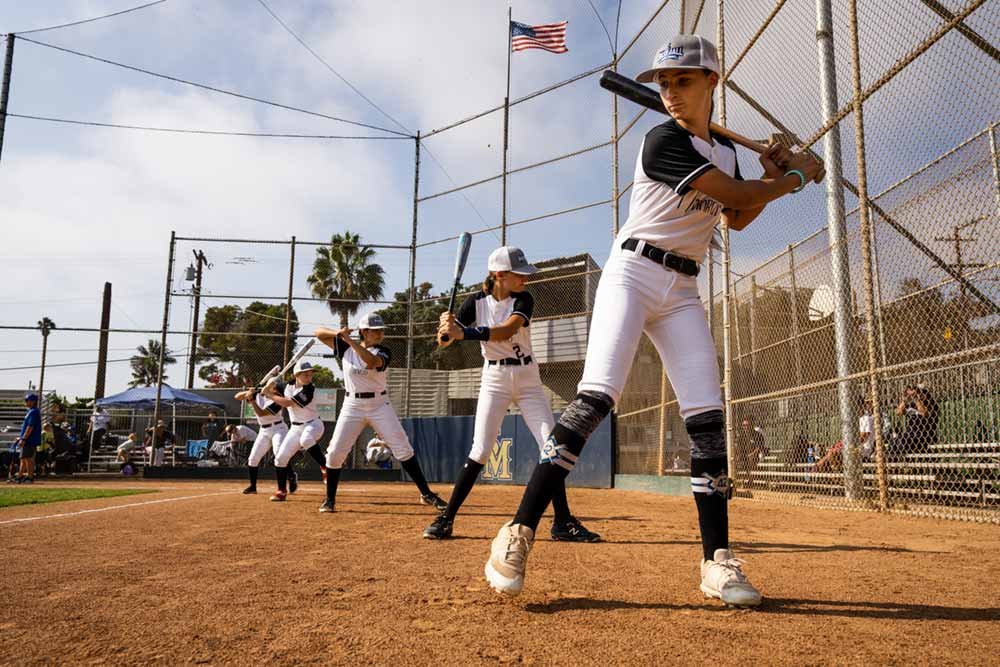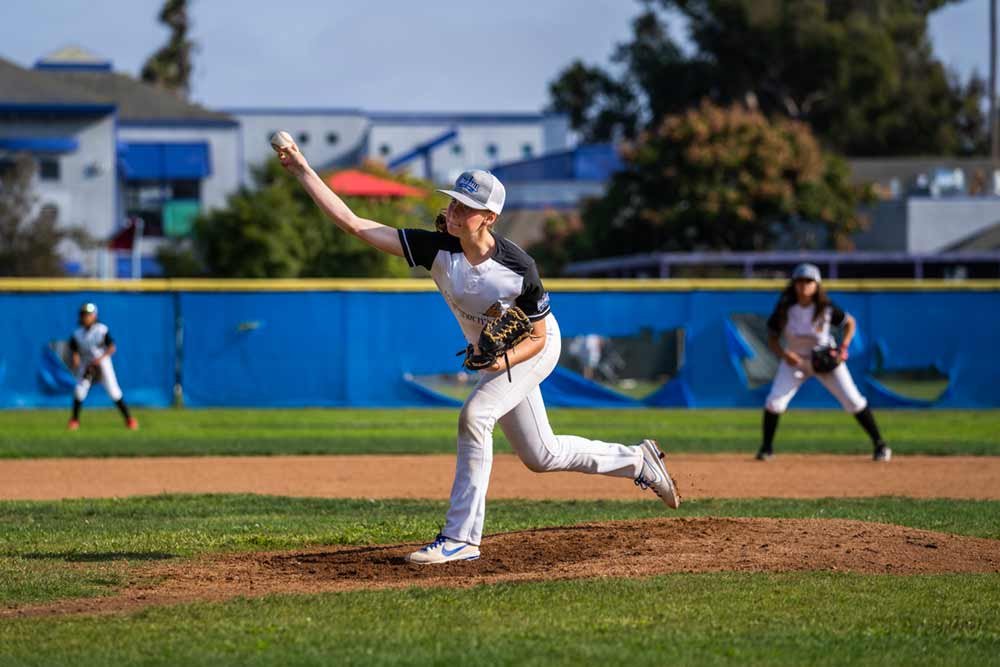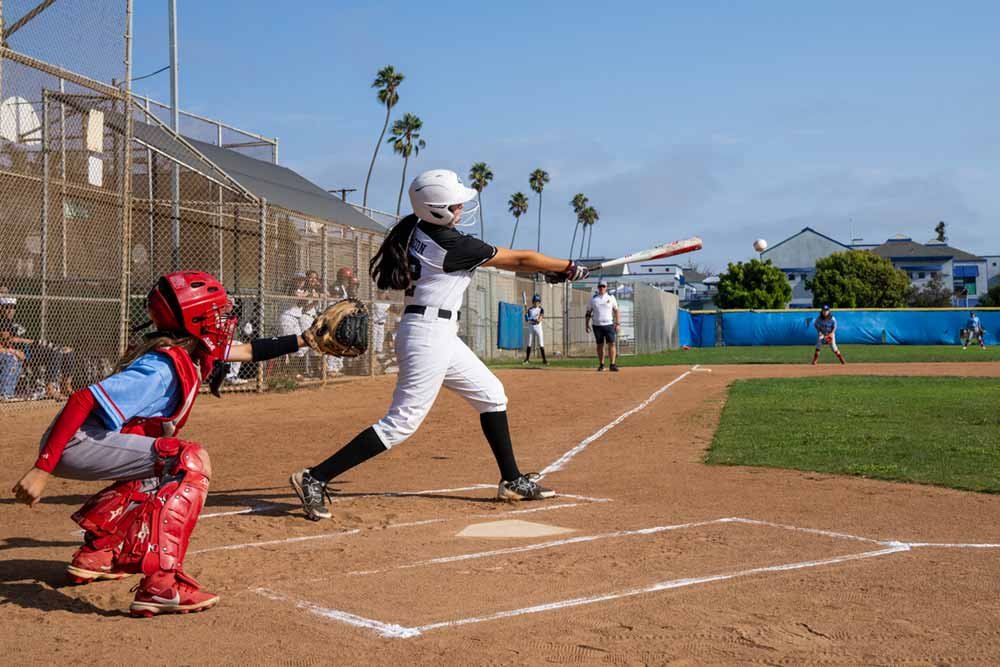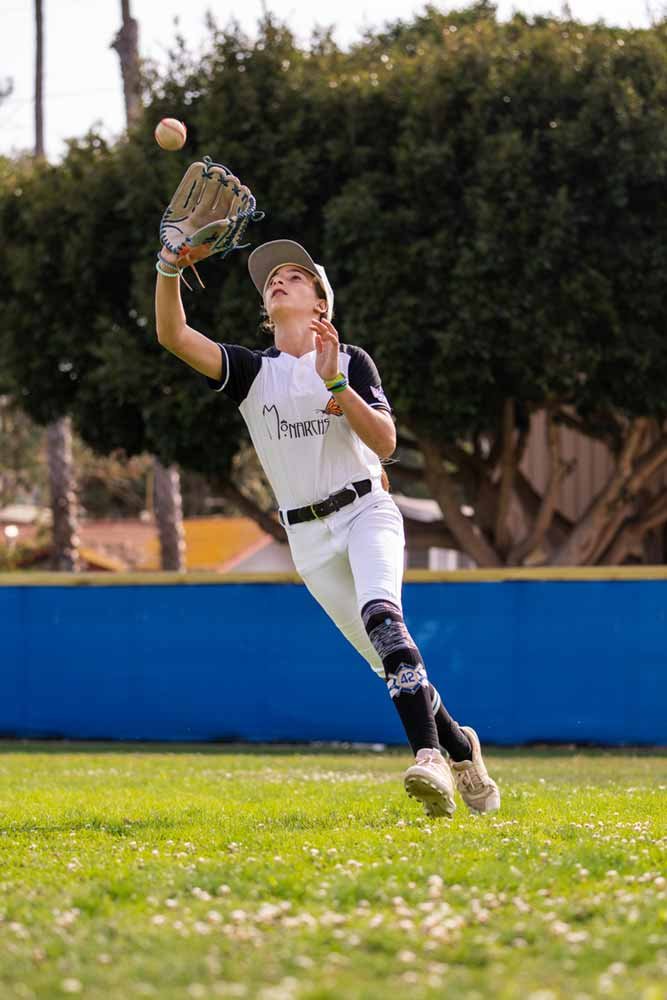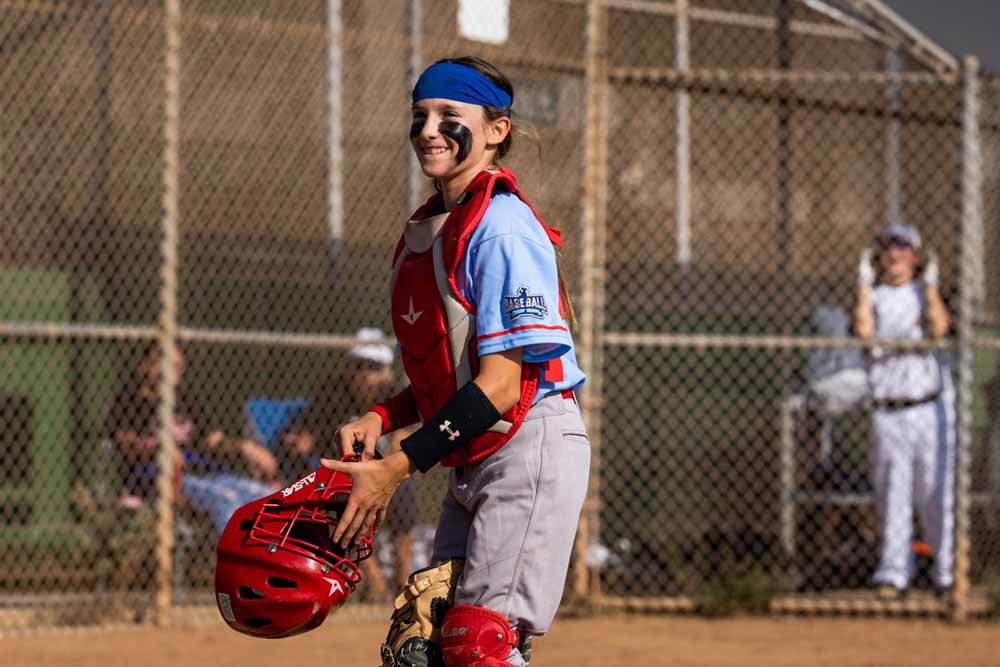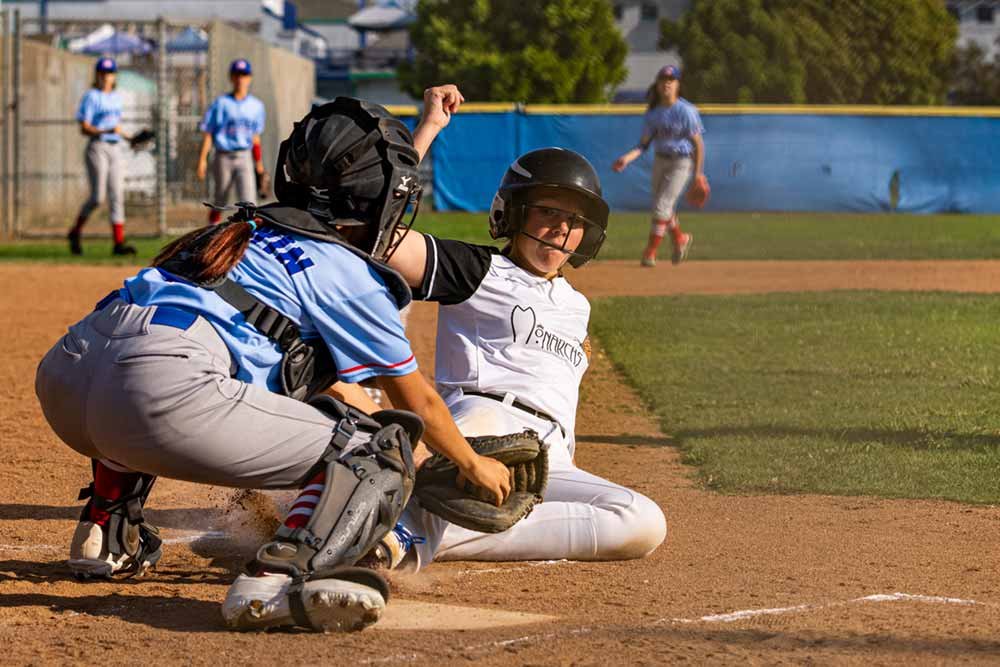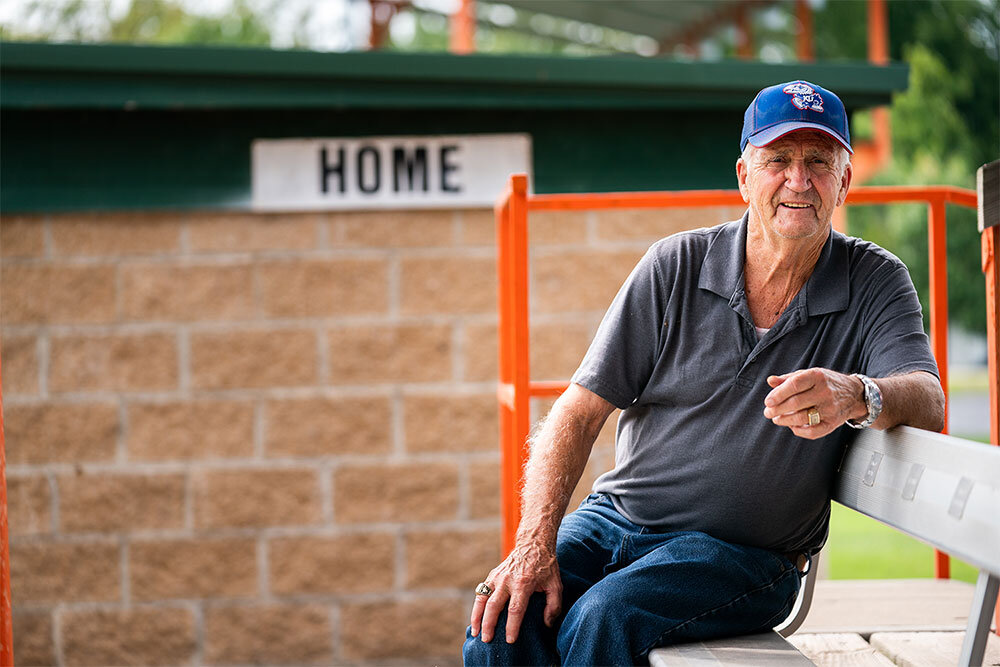“It’s incredibly gratifying to see more and more women making a difference in our national pastime, on and off the field. The strides we have made in leadership roles are significant, and will lead to a brighter future for the game as we strive for greater inclusivity.”
— Hall of Fame Chairman, Jane Forbes Clark
Jim Thome and his son Landon present the future Hall of Famer's 600th home run baseball to Hall of Fame Chairman Jane Forbes Clark and now-retired Hall of Fame President Jeff Idelson prior to the 2014 Hall of Fame Classic in Cooperstown, NY / PHOTO Milo Stewart Jr., National Baseball Hall of Fame and Museum
As Baseball’s doors to inclusivity continue to swing open, there are women in leadership roles who are a substantial part of the game’s fabric. There’s a growing number who are in senior executive positions, but there is only one who serves as her organization’s ultimate visionary, and that’s Jane Forbes Clark, who leads the world-renowned National Baseball Hall of Fame & Museum in Cooperstown, New York.
The Board chairman’s great-great-grandfather, Edward Cabot Clark, established roots in Cooperstown in the mid-19th century while working as Isaac Singer’s patent attorney and co-founder of the Singer Sewing Machine company. Two generations later and born into a culture of philanthropy, Jane’s grandfather, Stephen C. Clark, built three world class museums in the quaint, central New York village: the Fenimore Art Museum, New York State Historical Association, and the Baseball Hall of Fame.
“If you build it, they will come” is the mantra whispered from the skies above to Ray Kinsella in the 1989 classic baseball film, Field of Dreams. That same slogan must have also run through Stephen Clark’s mind a half-century before the film’s release, as the Museum has welcomed more than 17 million visitors since opening its doors on June 12, 1939.
Museum Chairman Jane Forbes Clark in the famed Hall of Fame Plaque Gallery, Cooperstown, NY / PHOTO: Emma Tannenbaum
“When my grandfather founded the Hall of Fame, he did so because he loved the game — the beauty of the game on the field and the beauty and the depth of its place in American culture,” Jane reminisced. “He shaped his vision for the museum from that love, as do I.”
Babe Ruth — one of the first five players elected — spoke from the Museum’s front steps on that Monday afternoon 84 years ago. “I hope some of you kids will be in the Hall of Fame. I’m very glad that in my day I was able to earn my place. And I hope youngsters of today have the same opportunity to experience such feeling.” For young ballplayers like Yogi Berra, Duke Snider and Robin Roberts who were teenagers, and eight-year-olds Ernie Banks and Willie Mays, Ruth’s words proved prophetic.
One of Jane’s first experiences with the Hall of Fame came in 1966 while she was in grade school, when her father introduced her to Ted Williams and Casey Stengel, who were being inducted that year. “They autographed a baseball for me,” she recalled fondly.
She’s been at the helm for 23 years, providing substantial museum expertise, philanthropic insight, and strong management. Her tenure as Hall of Fame chairman, which began in 2000 after eight years as a director, has been punctuated by her acute ability to build consensus, guide with a steady hand, and assure that one of America’s cultural beacons remains relevant and accessible to the hundreds of millions of baseball fans around the globe who revere the game and its long history.
“Jane is a compassionate and principled chairman who leads the Hall of Fame and museum with class and style,” said Paul Beeston, president emeritus of the Toronto Blue Jays, and a Hall of Fame director since 1998. “When a tough decision needs to be made in the Board room, she listens, considers, and leads the directors through the process that best reflects the Board's position, while maintaining the integrity of the institution. Through her drive and compassion, she has made it the best Hall of Fame in the world, without question.”
Clark has lent her vast array of skills to other organizations, serving as the vice chairman of the Jackie Robinson Empire State Freedom Medal Commission and as a trustee of the Little League Foundation. She’s also spent substantial time helping the United States Equestrian Federation, with whom she currently serves as a trustee and is past president and CEO; and to the United States Olympic Committee, where she sat on its Board of Directors.
“Jane’s experiences as the leader of United States Equestrian Federation and as a Board member of the United States Olympic Committee enhanced her understanding of global sport,” said Hall of Fame Board member Harvey Schiller, who served as executive director and secretary general of the United States Olympic Committee. “The intricacies of the Olympic Movement exposed her to the realities of international politics in dealing with performance drugs, security, and the media. Each added to her continued effective leadership of the Baseball Hall of Fame.”
Two-time MVP and 14-time All-Star Johnny Bench, who has been a Hall of Famer for 34 years, added, “Jane is one of the most intriguing and interesting people I know. Her interests range from equestrian to bucking bulls to real estate to a multitude of charitable activities, but her real love is the Hall of Fame. I’m never sure she will even be given enough credit. She should be honored with the Medal of Freedom.”
Cooperstown Diner, Main Street, Cooperstown, NY / PHOTO: Jean Fruth
Cooperstown is home to 1,800 year-round residents and has one stoplight. Visiting the charming village feels like stepping back in time, perhaps into the middle of a Norman Rockwell painting. With baskets of colorful geraniums hanging from old-style streetlamps that line Main Street and prevalent 19th century architecture, Cooperstown offers tourists a generous slice of Americana. When you walk through the front doors of the stately red brick building at 25 Main Street, its exhibitions and programs take you on a journey back to your childhood.
Hall of Famer Randy Johnson, Main Street, Cooperstown, NY / PHOTO: Jean Fruth
“Baseball and America have grown up together,” Clark opined. “In fact, the game is such an integral part of our culture that we often take for granted its deep day-to-day significance in our lives. As fans around the globe make the pilgrimage to Cooperstown to see the Hall of Fame, we learn more about ourselves as a people who possess a shared set of values, as reflected through our national game.”
The venerable institution houses three entities under one roof: a museum and library to chronicle the game’s rich history; an education hub where school children and adults learn how baseball shapes culture through music, art, science, math, economics. language and history; and a Hall of Fame to honor the game’s greats. The overriding mission is to preserve history, honor excellence and connect generations.
“Visiting Cooperstown and the Museum is off the charts,” said 13-time Gold Glove shortstop Ozzie Smith, who was inducted into the Hall of Fame in 2002 and serves on its Board. “Jane’s connection to the game, forward thinking and commitment to excellence set the tone and help assure that the Museum is always relevant, and the visitor experience is second-to-none.”
The lifeblood of the Hall of Fame is its unrivaled collection which totals some 65,000 historical artifacts from baseball’s beginnings until present day. Its archive includes more than three million books, periodicals, documents, photographs, contracts and recorded media, as well as a file on everyone and every subject that touches the game. In many ways, the Library and Museum are Baseball’s version of the Smithsonian and the Library of Congress, rolled into one.
Hall of Famer Hank Aaron in the National Baseball Hall of Fame and Museum, Cooperstown, NY / PHOTO: Jean Fruth
However, what sets Cooperstown apart from other cultural institutions and allows it to deepen its connection to baseball fans around the globe, is its living history makers — the Hall of Fame members — who define excellence. Only one percent of those who have played the game have a plaque in Cooperstown. It’s a very exclusive fraternity.
The crown jewel on baseball’s calendar each summer comes in late July when Induction Weekend takes place. Scores of the game’s living legends readily return to their home away from home to reminisce and welcome the electees into their fraternity. Annually, it’s the largest gathering of Hall of Famers in one place at one time, and an opportunity for the fans who make the pilgrimage to see their baseball cards come to life, experience the innate beauty of New York state, and fully enjoy the aura of a time not forgotten.
“Jane has been the driving force in Cooperstown,” 1995 Inductee Mike Schmidt told Joe Capozzi of the Palm Beach Post. “She has done amazing things with infrastructure that affect everything Hall members enjoy.”
“I think it’s important for fans to see all of the Hall of Fame members, and it’s important to the members because the Hall of Fame is a huge part of their lives.” said Clark. “They know how special it is to be a part of that elite fraternity. And that’s exactly what it is. I wanted the fraternity coming back and spending time together.”
Broadcast legend Tom Brokaw who was in attendance for one Hall of Fame Weekend was in awe. “As an American Legion shortstop who couldn’t get his girlfriend to a game, much less a scout, I was Walter Mitty all weekend,” he said, referring to novelist James Thurber’s fictional mild-mannered character who lived a life of fantasy. And there’s not a Starbucks within miles of Cooperstown, but its founder, Howard Schultz, made the trek with his son Jordan as Induction Weekend guests of Tony La Russa in 2014. “You look across the room and see Sandy Koufax AND Al Kaline. Meeting them was humbling.”
Doubleday Field, Cooperstown, NY / PHOTO: Jean Fruth
George Brett, who won batting titles in three decades on his way to earning Hall of Fame election in 1999, loves returning to Cooperstown and has a profound respect for Clark’s guiding hand. “Induction Weekend is very special and always memorable both for baseball fans and Hall of Famers, thanks to Jane. She knows that our fraternity likes to spend time together and she makes sure that happens. She also has her finger on the pulse of the fans and understands the importance of making sure they have a chance to connect with Hall of Famers in different ways. I love coming back to Cooperstown every summer to be a part of something truly special. Baseball and the Hall of Fame are fortunate to have Jane — a passionate visionary — at the helm.”
